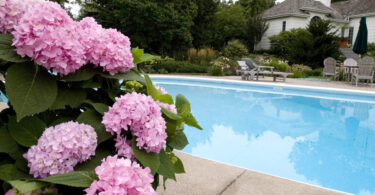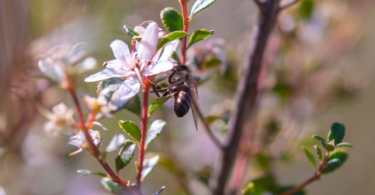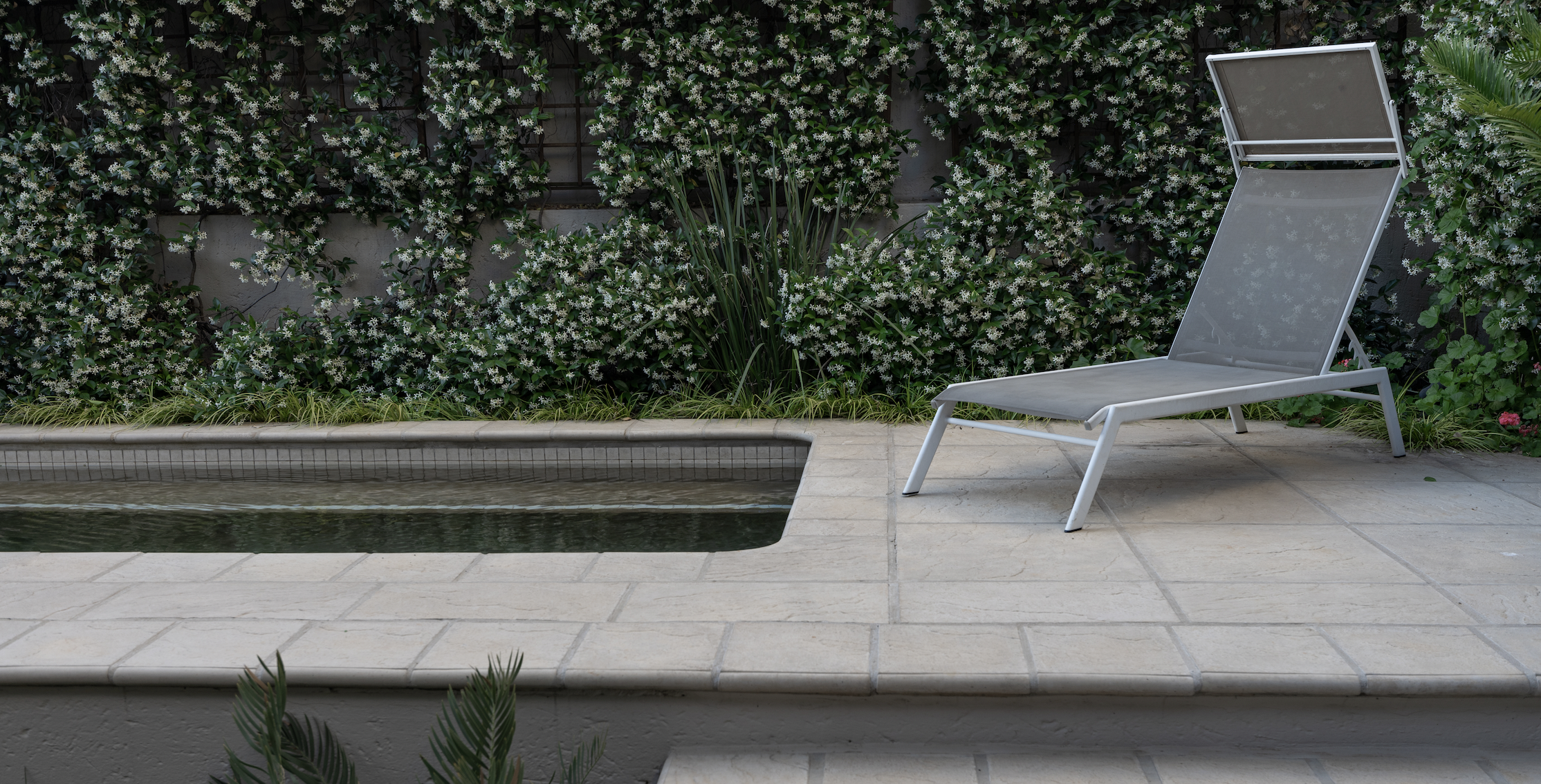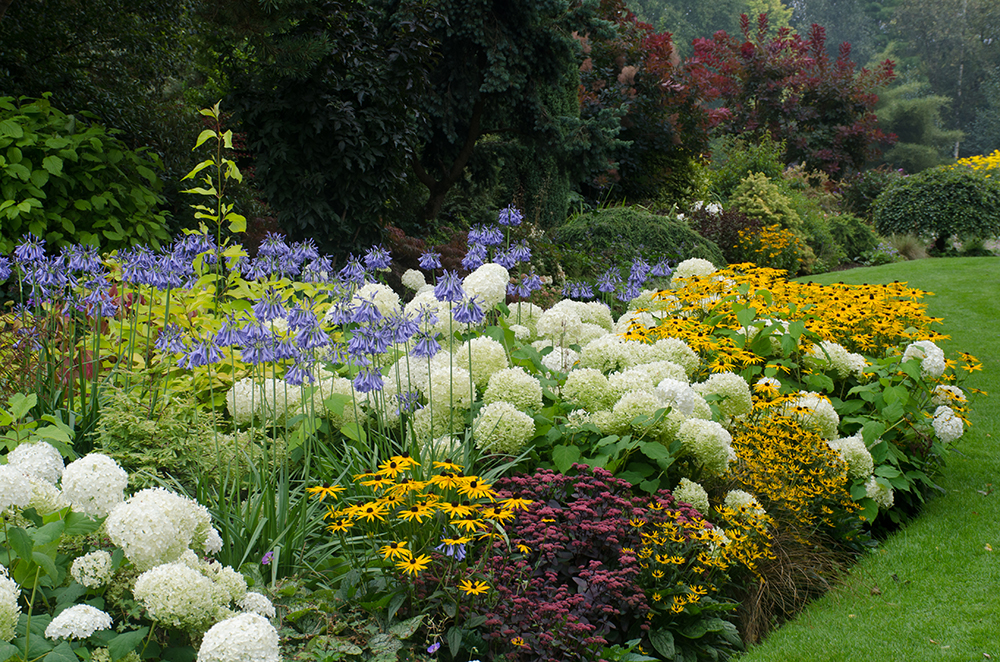July is a quiet time for gardeners and the slowest trading period for nurserymen. True or false? The answer is false! Winter is a great season to visit nurseries, to see what’s in flower. Aloes, succulents and winter annuals are all in their prime, and July is also a month of maintenance. So, dress up in warm layers and tackle your garden!
Your quick checklist:
● Fix uneven and worn out garden paths.
● Paint your garden gates a new colour, like the Pantone colour for 2015, which is Marsala – an earthy wine red.
● Tidy your garden shed and get rid of all the old chemicals you are not using anymore. They should under no circumstances be dumped in the rubbish. Phone your nearest nursery to find out how you can get rid of them in a safe manner.
● Lavish a new coat of paint on your trusty old wheelbarrow to prevent rust. It is an expensive piece of garden equipment to replace.
● Have your lawnmower and weed-eater serviced.
● Sharpen (or have sharpened) all pruners, loppers and hedge cutters.
● Repair retaining walls and fill the cavities of those built with custom-made retaining blocks with fresh soil mixed with compost and bonemeal to be ready for holding new cascading and groundcovering plants.
Western Cape
Colour now: Plant masses of Osteopermum (Cape daisy) and Gazania, so colourful in winter, in the pavement garden, the rock garden, in retaining walls and in pots.
Pruning time for: Hydrangeas, deciduous fruit trees, roses and other plants that need shaping. Feed all the pruned plants with a general fertiliser, water them well and renew the layer of mulch around them.
Avoid a slippery slide! Moss can be very dangerous on pathways or garden steps in rainy weather. Kill it off with boiling water, copper sulphate or moss killer, or blast it off with a pressure spray.
Eastern Cape
Remember to: Water azaleas, camellias and magnolias regularly or they will drop their flower buds.
Do not forget to keep spring bulbs moist and to feed them with bulb fertiliser.
Pruning to do: Roses, fruit trees and shrubs that are not about to flower in spring. Take care to stake plants and check and replace ties. Ties can do a lot of damage to plant tissue if they become too tight. Prune back ornamental grasses that have become brown.
Thyme to grow: Good herbs to grow in winter are thyme, orginanum, chervil, parsley, sage, hyssop and yarrow. Also plant peas, onion seedlings, beans, raspberries, blueberries and blackberries.
Plan and plant for spring: After reshaping old beds, fill them with osteospermums, pelargoniums, lavenders and gazanias.
KwaZulu-Natal
All in flower: Watering and feeding are vital to keep flowering plants in pristine condition, and deadheading is as important as ever to stretch their flower power. Petunias still perform well if planted out now. They are especially suited to window boxes, pots and hanging baskets.
Stuff to eat: Sow the last crops of peas and broad beans. Feed mint to encourage new growth and plant out parsley seedlings for a bumper spring crop. Prune deciduous fruit trees and spray with lime sulphur to control fungal diseases and insect eggs. Buy new lime sulphur each season, as it does not keep from year to year. Make sure that trees with crops on are watered during dry spells. This will prevent the fruit from dropping due to stress. Apply magnesium sulphate to citrus trees.
Stuff to eat: Sow the last crops of peas and broad beans. Feed mint to encourage new growth and plant out parsley seedlings for a bumper spring crop. Prune deciduous fruit trees and spray with lime sulphur to control fungal diseases and insect eggs. Buy new lime sulphur each season, as it does not keep from year to year. Make sure that trees with crops on are watered during dry spells. This will prevent the fruit from dropping due to stress. Apply magnesium sulphate to citrus trees.
Spirit lifters: Grevillea ‘Canberra Pink’ and the dwarf G. lanigera ‘Mount Tamboritha’, both autumn to winter-flowering, are perfect to plant now. Protect them from severe frost while they are still young.
Plant leeks deep: Leeks grow in the cooler months and are less daunting to grow than onions. Plant them in a trench about 8 cm deep (they like being deep!) and feed every 2-3 weeks with a liquid fertiliser.
Add the patina of time: Encourage lichen growth on raw brick walls or stone garden ornaments like urns by painting them with liquid seaweed fertiliser or yoghurt.
Free State
Do things with ivy: Ordinary, large-leaved ivy is frost resistant, cheap, very versatile and can be used to great effect in any garden. Plant it as a fast-growing, weed-smothering groundcovering under large trees – the shallow ivy roots will not mind the competition from deeper tree roots if you water it regularly.
Plant a snowy hedge: Plant Eriocephalus africanus (wild rosemary or snow bush) as a low-growing hedge around your herb garden or as a border for a sunny, indigenous bed. These aromatic plants produce a mass of small white flowers, followed by little puffs of cottony seeds (hence the common name), which the birds need to line their nests.
Find the ‘goggas’: Dig over the soil around your fruit trees in the backyard about 2-3 times during winter to expose any overwintering insects and fungi spores to frost. The last dig is also your opportunity to create neat basins around each tree, which makes deep watering with a hosepipe to get the moisture close to the roots easier and less wasteful.
Break it up: You can break up heavy clay soil by digging in a dressing of agricultural lime. Add a light dose of agricultural lime to irises and stocks too, to promote good flowering in spring. Ailing lavenders and Clematis also benefit from a small dose of lime in winter.
Limpopo
Hang them high: Plant up your baskets with all kinds of little trailing titbits that will either produce lots of flowers or showy foliage in early spring. Also give tired old window boxes a lick of paint. Designing a new look and planting up these type of containers is one of the greatest gardening pleasures one can do on a wintry day. Consider these possibilities: herbs, groundcover roses, mixed annuals, vegetables like different coloured lettuces, ferns, succulents and dainty climbers like jasmine and trailing pelargoniums.
Does one feed in winter? Anything that is actively growing or in season, like winter vegetables, citrus, bulbs, annuals and small flowering succulents and azaleas, must be fed with a liquid or specific fertiliser in winter.
Pruning to do: Roses can be pruned, but do not be too hasty to remove frost-damaged parts of other plants. Give lavenders a trim – this will encourage new growth and flowers for August and September.
Start up the veggies: In frost-free areas, begin sowing summer veggies like tomatoes, brinjals, baby marrows and butternut.
Mpumalanga
Help for impatient gardeners: Buy ‘colour bags’ of annuals if you want an instant flower garden or do not have the patience to wait for baby stuff to grow. It is not a waste of money as these plants are not ‘blown’ or on their ‘last legs’, they will just supply flower power and pleasure much faster for you to enjoy.
Quirky pot plants: If you are bored with traditional potted plants or need a cheap trick to supply greenery for a party, sow some lawn seed in clay pots or wooden boxes. You will end up with a miniature and portable green lawn into which you can arrange small garden flowers in glass tubes – ain’t that a cute idea!
Pot up a bartender’s lime: The small fruit of Citrus aurantifolia (West Indian lime or key lime) can be used from green to yellow (when it is ripe), and is a flavoursome little fruit to add to any sundowner. The aromatic, compact and bushy shrub is an ideal candidate for large pots on a sunny patio.
For more information on bringing life to your garden, visit the Life is a Garden website or join the conversation on their Facebook page.









Leave a Comment